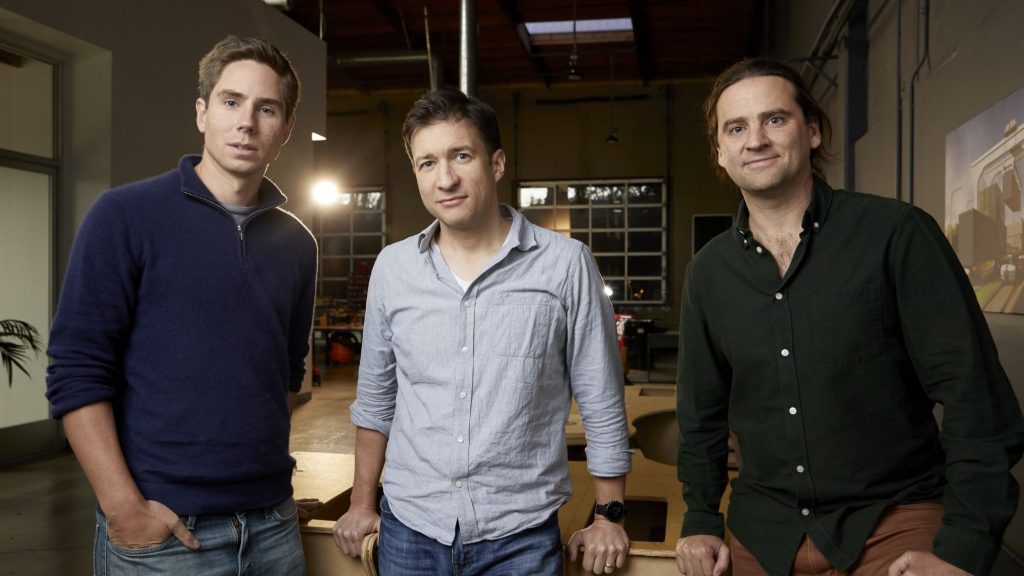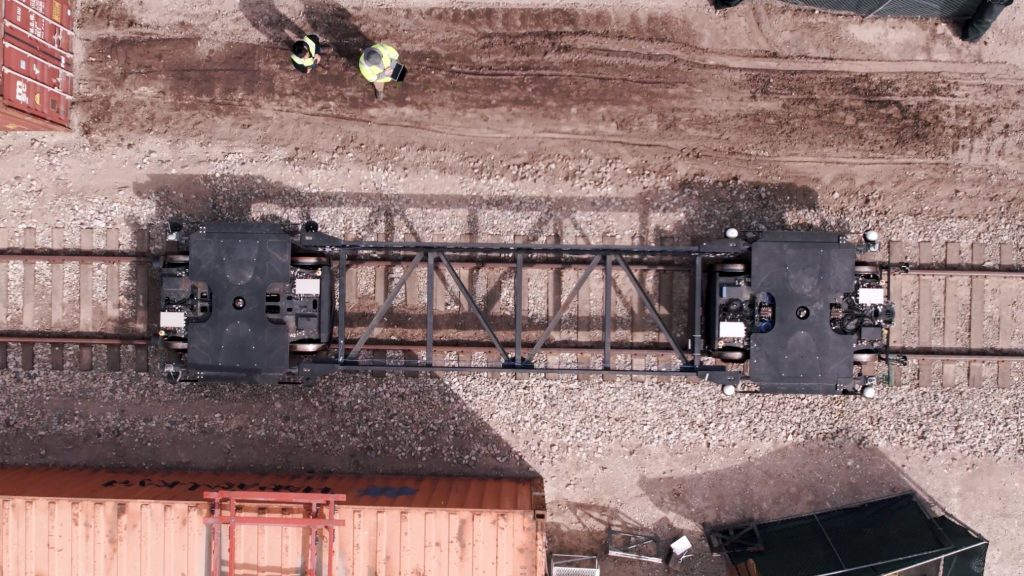
Autonomous battery-electric rail-vehicle startup Parallel Systems today introduced its second-generation vehicle to be used with customers in pilot testing on existing rail networks in the U.S. and internationally. Key to this latest step in the company’s developments is the opportunity to safely test core technologies and operational concepts on corridors shared with conventional freight trains and to conduct critical testing to verify the system’s ability to use the general rail network. The company is developing its tools and software so railroad customers can operate Parallel vehicles from their existing dispatching and train-control systems.
“Testing this vehicle generation and supporting systems is a critical step in our product development to inform our commercial product,” said Matt Soule, Co-founder and CEO, of Parallel Systems. “With less than 3% of the 143,000 miles of U.S. railway occupied by active trains at any given moment, there’s immense opportunity to shift freight from the overburdened trucking industry to rail. In addition to addressing the truck driver shortage, converting 100,000 trucking miles to Parallel’s rail zero-emissions vehicles would eliminate up to 175 tons of carbon dioxide from the atmosphere.”
Co-founded in 2020 by SpaceX engineers Soule, VP of Software Ben Stabler, and VP of Operations John Howard, Parallel’s mission is to decarbonize freight on rail by building a cleaner, automated rail system with innovative software and hardware. The Los Angeles, CA-based company has created autonomous battery-electric rail vehicles to move freight cleaner, faster, safer, and more cost-effectively than traditional trains or trucks, aiming to increase the utilization of today’s rail network by converting some of the $700 billion U.S. trucking business to rail.

In February 2022, it was awarded over $4.4 million by the U.S. Department of Energy as part of its Advanced Research Projects Agency-Energy initiative, which is helping to fund the development, production, and testing of the second-generation electric rail vehicles. Parallel’s vehicle design is optimized for a fully modular freight movement system, improved integration, and safety. It will help the company refine performance and reliability as it works to finalize its product offering.
The second-generation vehicle is being built with a battery-electric traction motor propulsion system, is fully autonomous with a bi-directional camera-based perception system, with a payload capacity of up to 70,000 lb (58,000 kg) with a single stack container. The most notable visual update is a spanning structure that connects each end of the railcar to accommodate a standard-sized shipping container.
“This vehicle consists of two bogies connected by a spanning structure,” Soule told Inside Autonomous Vehicles. “Each bogie has a single powered axle and high-voltage battery system. Each axle has independent hydraulic and parking brakes.”
Each individually powered railcar can form platoons of up to 50 cars to reduce energy consumption and efficiently use rail network capacity. For fully automated platooning, the railcars don’t need to hook or unhook.
“There is an outward bumper on each side of the vehicle used for moving together in platoons,” said Soule.
Once contact is made, each vehicle contributes to the propulsion of the platoon by regulating tractive effort. The small air gap and pushing action through railcar bumpers reduce the overall aerodynamic drag of the platoon, improving energy efficiency.
“Onboard cameras and sensors help monitor vehicle performance while radios transmit encrypted telemetry and commands,” said Soule. “When operated in testing the vehicle will always be under direct supervision.”
The second-generation vehicle includes both autonomous and remote operation features. While initial pilot tests will always operate under supervision, the autonomous system will be installed, learning, and improving as the company further develops its autonomous capability.

Parallel is working with customers to bring the vehicles to existing rail networks in the U.S. and internationally. The company plans to offer a portfolio of solutions, allowing the company to test the new architecture that is better suited for international markets and is more cost-effective. It has produced three second-generation vehicles, with three more in production and more expected to follow.
“A main purpose of building these prototypes is to test how well they will integrate with real-world railroad operations,” concluded Soule. “Parallel is conducting ongoing and extensive analysis and testing to demonstrate that its rail vehicles are ready to be used in pilot programs with real railroad customers. A big part of achieving commercialization is having operational practices that safely work with what the railroads use today.”
The vehicles have been undergoing control, telemetry, traction, brake, and dynamics testing since November 2022 at Parallel’s Southern California test facility. Track-worthiness testing will be conducted with MxV Rail, a subsidiary of the Association of American Railroads, in Pueblo, CO, in 2024. Parallel will start platoon demonstrations with the second-generation vehicle later this year.

